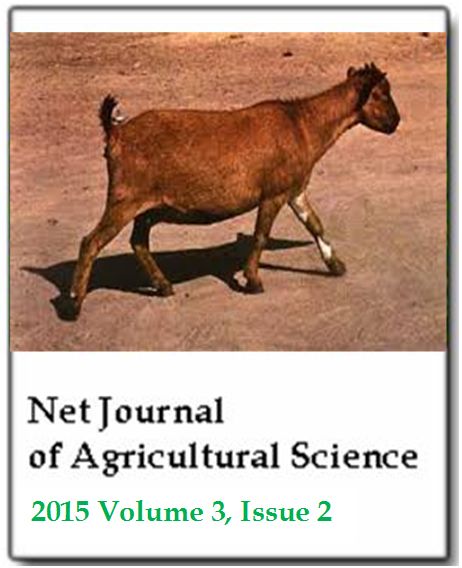Effectiveness of participatory breeding and variety selection for sorghum technology adoption in Zambia
Lloyd Mbulwe, Mwila Lwaile and Medson ChisiNet Journal of Agricultural Science
Published: May 26 2015
Volume 3, Issue 2
Pages 41-48
Abstract
Participatory breeding and variety selection has been proposed as an effective way of disseminating improved technologies to farmers for social-economic benefits. As a result the Sorghum and Millets Improvement Programme (SMIP), of the Zambia Agriculture Research Institution (ZARI), in collaboration with the farming systems scientists at Mansa Research Station, in Luapula Province tested the effectiveness of this methodology. The effectiveness of this method was evaluated based on the number of farmers rating new improved agriculture technologies favourably and willing to adopt the improved technologies after being exposed to participatory breeding. An on-farm participatory sorghum variety demonstration trial was conducted during the 2011/2012 rainy season in Zambia, Milenge district, of the Luapula province. The trial consisted of 12 improved sorghum germplasm lines of which six were hybrids and six were varieties developed by SMIP. The germplasm was evaluated by the farmers, extension and research staff on farm. The germplasm was evaluated for its value for cultivation and use. The methodology that was used is called participatory breeding which is part of the broader concept of participatory rural extension and the Innovative Platform for Technology Adoption (IPTA) advocated by the Forum for Agriculture Research in Africa. The results of the methodology indicated that this methodology is effective if farmers are committed and good agriculture policies are in place. When farmers feel part of the developmental process, it is easier for them to adopt improved technologies.
Keywords: Sorghum, IPTA, participatory breeding, variety selection, technology adoption, value addition, markets, social-economic, policy.
Full Text PDF
